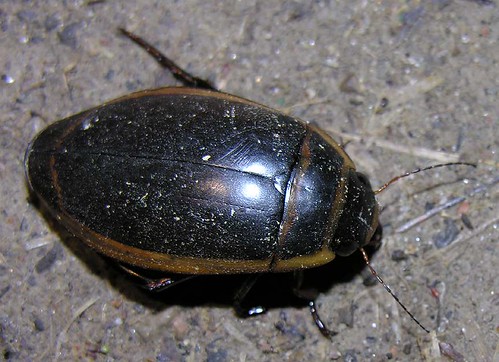
Predaceous Diving Beetle.
This image appears here with the kind permission of the photographer, Bev Wigney.
Recently, some bird pals of mine have been discussing some "large bugs" that have been making their appearance "everywhere". They finally settled on the insect's identity as a Predaceous Diving Beetle, which is a member of the insect family, Dytiscidae.
Coincidentally, Bev has been photographing and video taping one of these "bugs", as you will see here and here at her delightful blog, Burning Silo. Go have a peek at her excellent photographs and video of this interesting insect.
More like this
There are 24 new articles in PLoS ONE today.

These are great bugs! One landed on our back deck years ago, the dogs were trying to sniff it, but it was having none of it. I took it to work and my bosses husband was a science teacher, he told me all about it and released in a local pond.
Their larvae are viscious. A biologist friend referres to them as pond tigers, since they will kill very small fish and tadpoles.